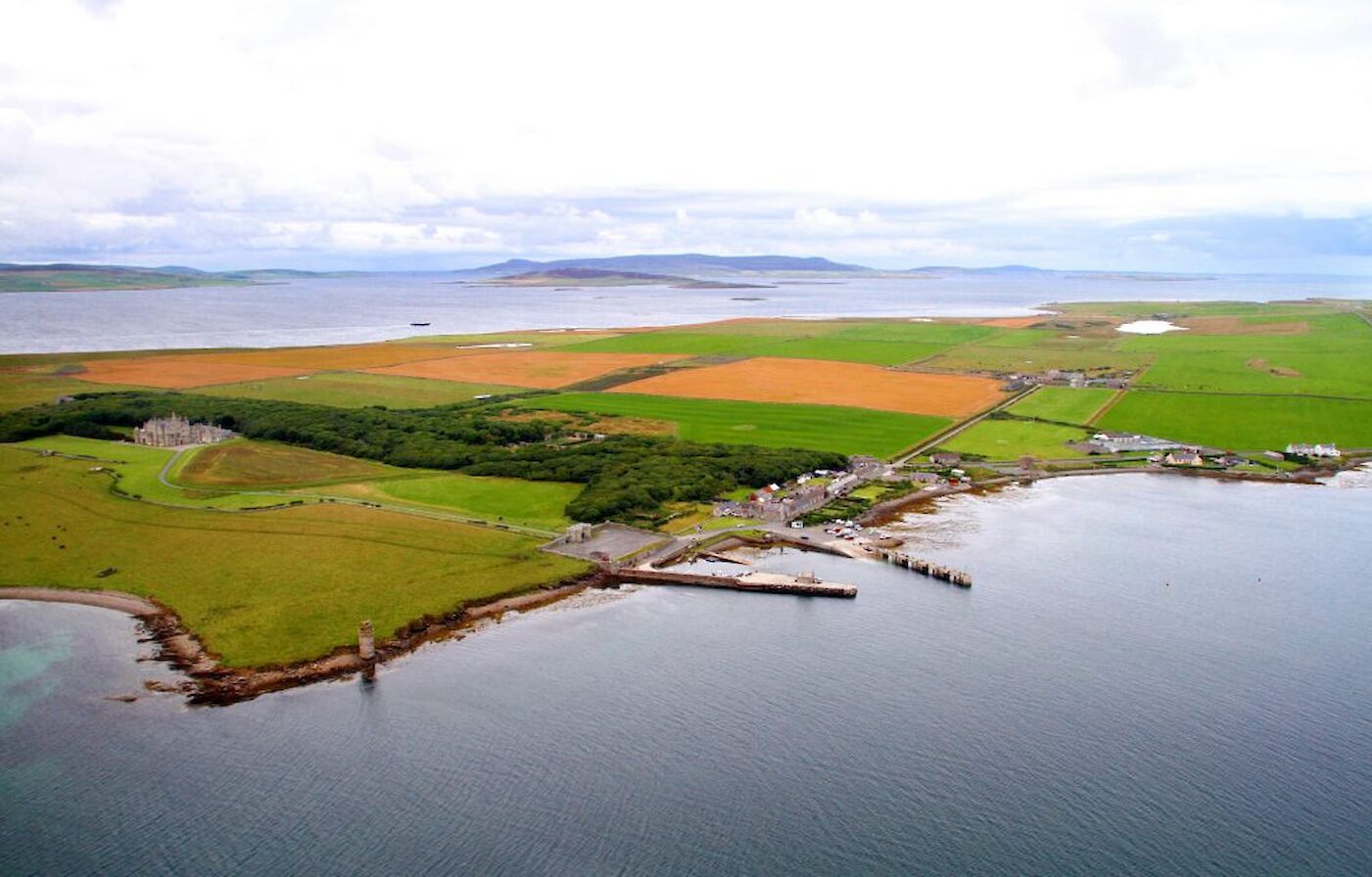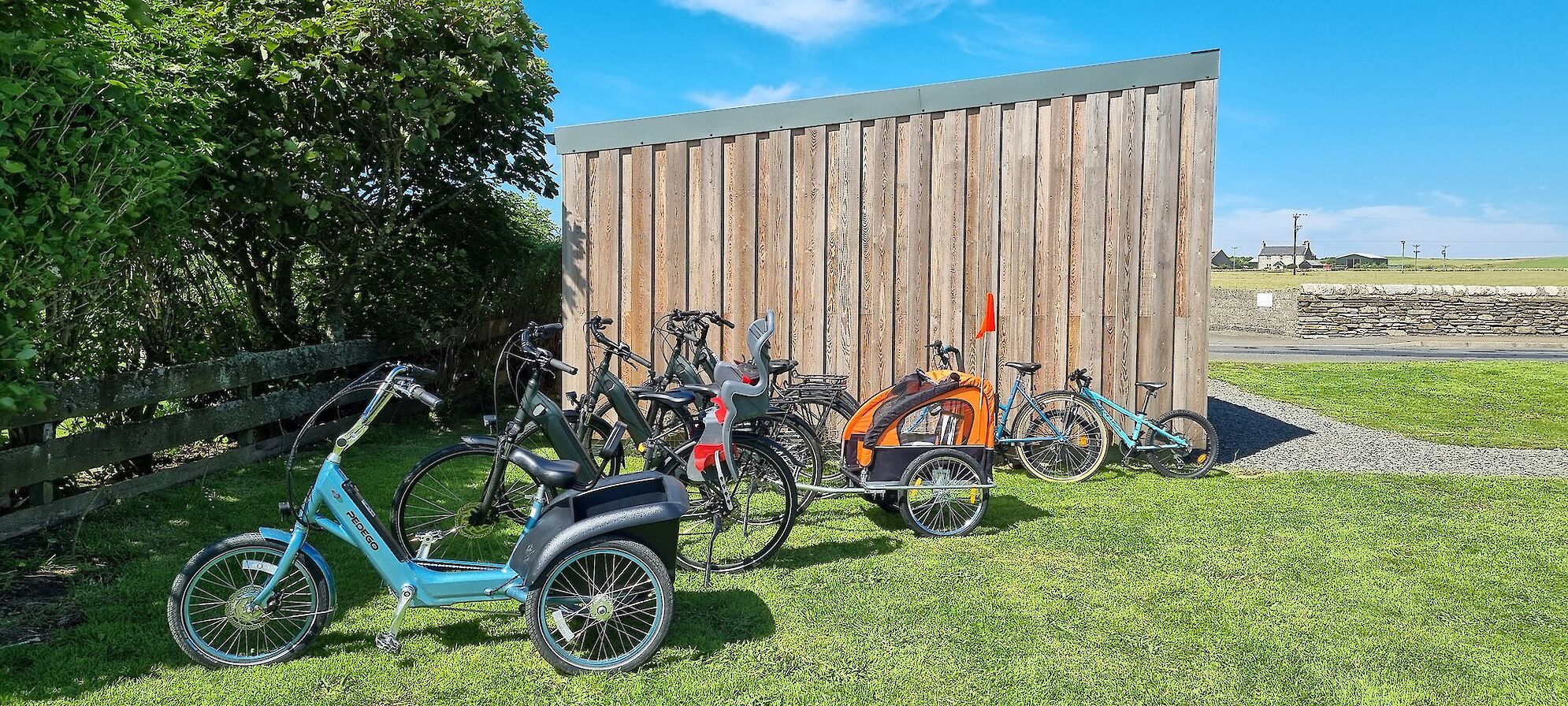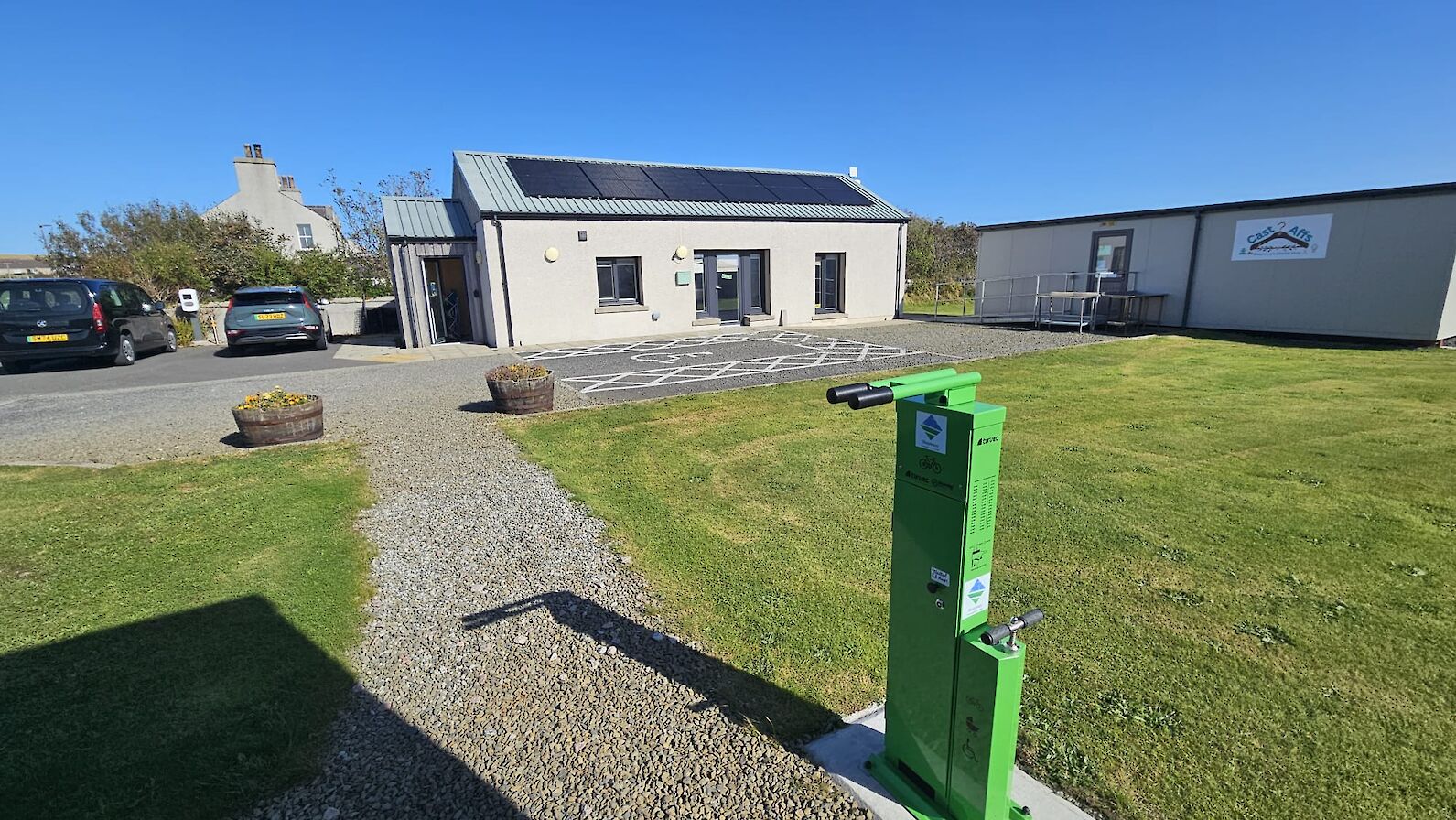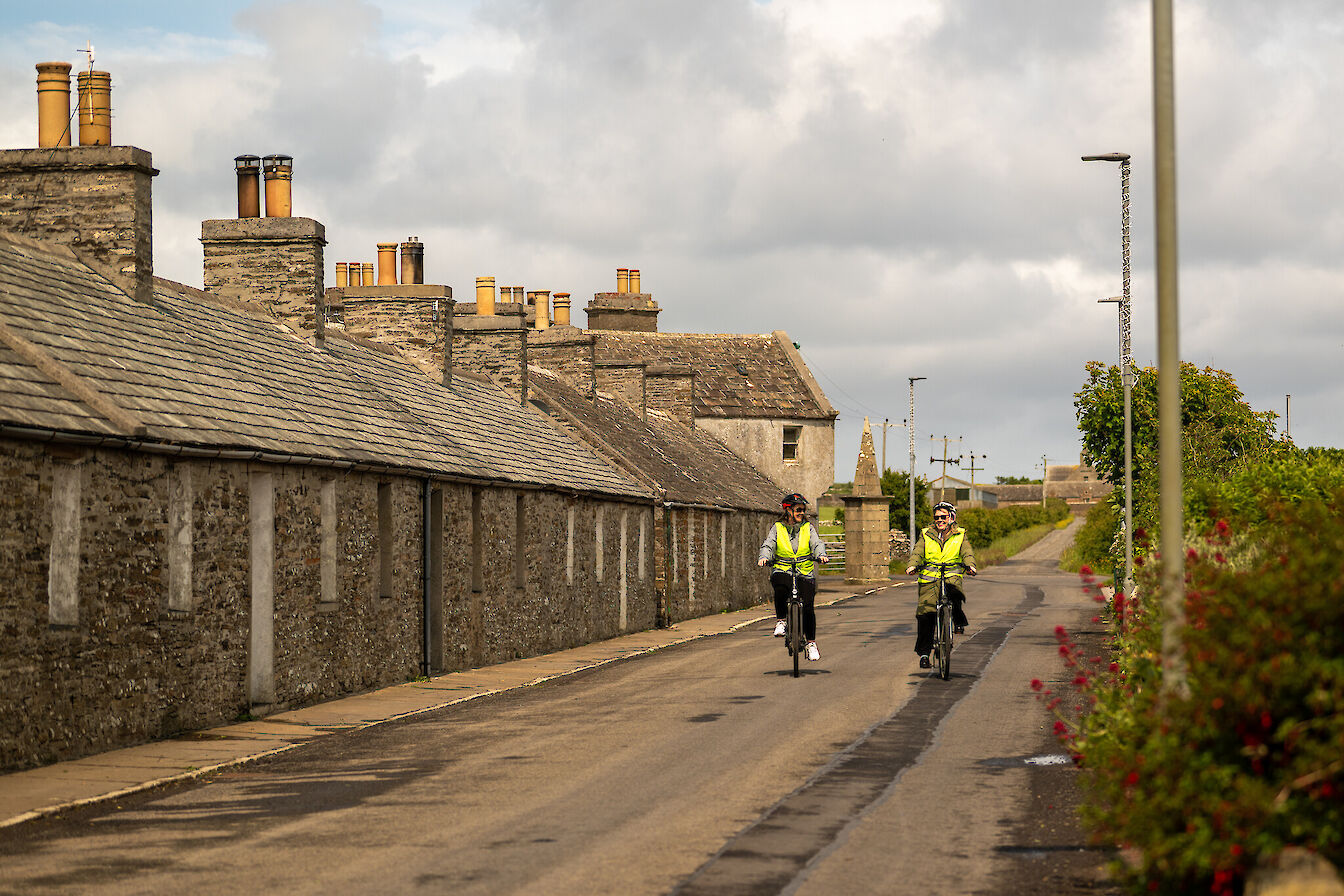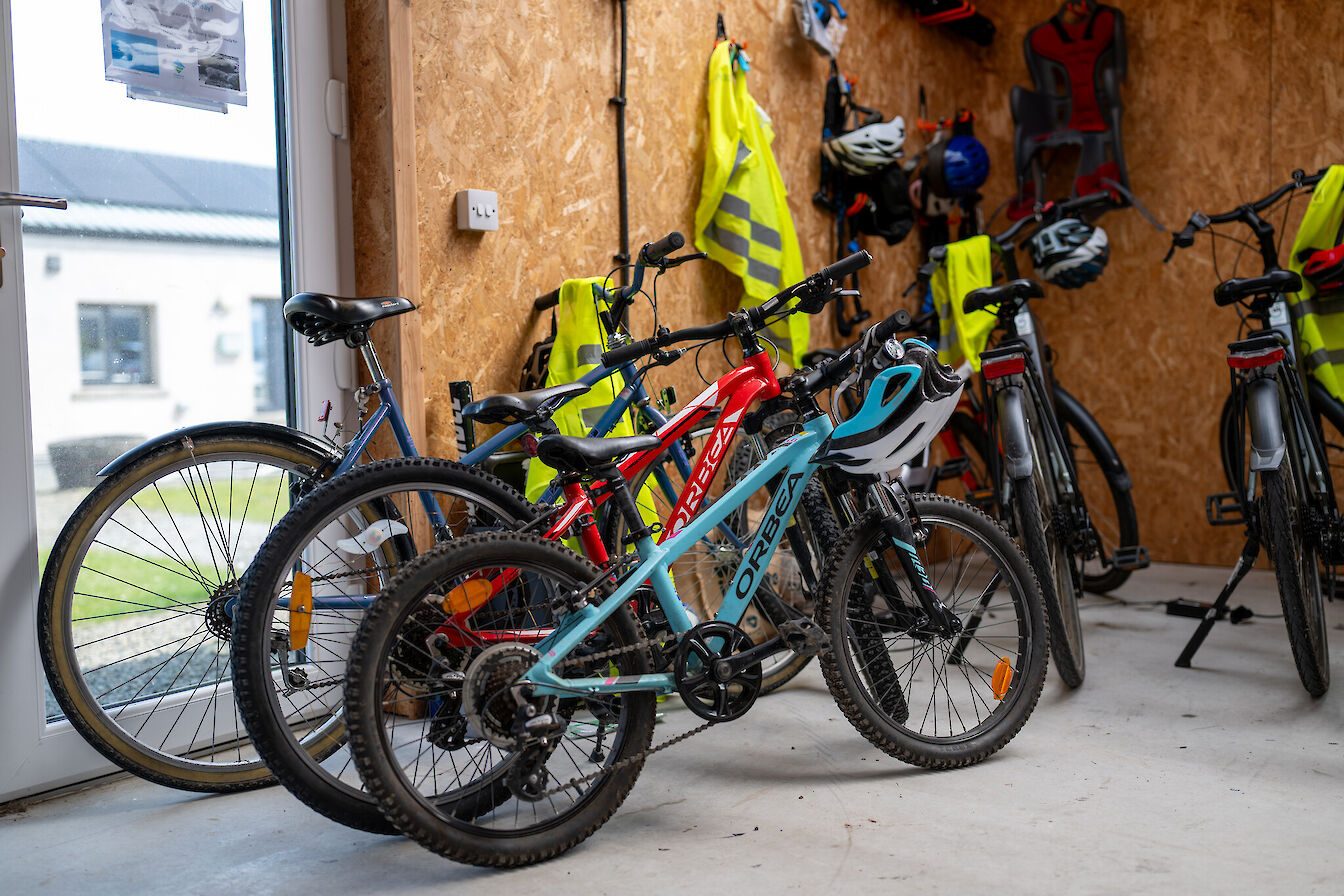The Boathouse
Shapinsay
KW17 2DY
The Trust grew out of the Shapinsay Development Group which was formed in 2002 after consultation with the island.
Shapinsay Development Trust bought the Smithy Cafe/Restaurant and re-opened it's doors in 2023 after extensive refurbishement. It's core priorities are providing employment and providing a warm and inviting space for locals and visitors to enjoy. A place to meet, eat, drink and enjoy a social experience in Shapinsay. We are still in our first year, so there is still an element of trying things out to see what works and what doesn't, but we've enjoyed the journey! Keep up to date with our latest Smithy updates on our Facebook page https://www.facebook.com/SmithyShapinsay
We now rent out Ebikes from the Trust building - Check shapinsay.org.uk/transport for more details
Our most recent projects, besides the Smithy have been our housing projects (we have two homes currently rented on the island), we are in the process of renovating Rulinvoe, a 3 bedroom property on the island that was in need of renovation. We hope to be able to rent it to a family with 3 primary school age children by August 2024! We hope to begin renovation on another property in 2025, which should create a further 3-4 homes for rent on Shapinsay.
Our wellbeing project was an innovation created to support the islanders on various islands, including Shapinsay, the idea is to provide support, liaise with bodies such as THAW, Warmworks, Blide etc and to run groups on the island that will be beneficial to those that need it. The wellbeing project for Shapinsay provided a pop up cafe when no other cafe was available on the island, it provided a pop up charity shop, which ended up being a pilot project for our current charity shop project and it's provided all sorts of services from wellbeing walks, active movers groups and the mens shed project.
Our Charity shop opened in 2024 and is open once per week, on a Thursday, but if the office is open, you can pop in and ask for the Charity shop to be open any time!
Who are Shapinsay Development Trust?
The Trust which is a company limited by guarantee was formed in 2003 achieving charitable status at the same time. The trust is run by 7 directors, members of the public who volunteer or are nominated to achieve the development trusts charitable aims and objectives. Any islander over the age of 18 is elegible to be a member of the trust. Membership of the Trust gives the members a vote each at the Annual General Meeting or AGM. At this meeting the directors tell the members what the Trust has been doing during the past year and present the accounts for the last financial year. If there are vacancies on the Board then members will vote at this meeting to elect new directors. Public meetings may be held at other times during the year to enable the directors to present various options to the community and to assess the opinion of the community. Other means of communication include newsletters, the website and the board in the shop window. This process is formalised in the drawing up of the Development Plan.
A 5 year development plan is formed with input from the community and approval by the membership, this is what shapes the direction that the trust take.
Balfour Village
Balfour village was built in the 1780s by Thomas Balfour that was originally named Shoreside. By 1841 there were 28 houses in the village, with 116 residents whose occupations included fishermen, shoemakers, tailors, blacksmiths, wrights, millers and a merchant. In 1846 the Castle and village were passed to David Balfour who also brought great change in Shoreside, demolishing the southern part of the village to improve the view from Balfour Castle and turning the rest into a fairly formalised estate village. And about that time, he changed the name from Shoreside to Balfour Village.To this day, Balfour Village retains much of it’s original character, and although it no longer has all the tradespeople it once had, it is once again a thriving area of Shapinsay with many choosing the village tp bring up families, there is still a “Merchant” in the village at Thomas Sinclairs shop, which has been in the Sinclair family for 100 years.
Balfour Castle
Balfour Castle was the creation of two men, David Balfour and David Bryce. The castle is a rare example of calendar house originally planned with 7 turrets, 12 external doors, 52 rooms and 365 sections of windows. The Balfour family owned the Castle for over a century but by the time the family line expired in the early 1960s the family fortune was gone and the Castle had lost most of its former glory. In 1961 Captain Tadeusz Zawadski and his wife Catherine took on the task of maintaining the Castle and once again turned it back into a family home thus fulfilling a prophecy which a gypsy fortune teller had shared with Tadeusz back in his native Poland - that he would one day live in a castle. Balfour Castle was sold into new ownership in February 2009. With attention to detail and with respect for the Balfour heritage the new owners have sensitively refurbished and restored the Castle and grounds. The greatest of care has been taken to retain its style and its character. Balfour Castle remains first and foremost a family home.
Mill Dam RSPB Bird Reserve
Mill Dams is covered in a dynamic wetland with open water. It's covered in wide swamp plant communities and a range of different plants, especially adaptive to living in damp, marshy places. You will find a wide selection of birds through out the year.
In the summer you look out for the rare pintail and up to nine different species of ducks. Also keep an eye out for the great yellow, one of the rarest British bumblebees that can be found on Shapinsay.
Autumn attracts hundreds of birds every year. The numbers increase as they migrate from the arctic. Greylag geese arrive in October and up to 1000 breeding pairs can been seen at one time.
Later in the winter up to 120 whooper swans and several hundred greylags roost within the safety of the reserve at night. Hen harriers can be seen on the reserve during the winter, attracted by the large flocks of waders and wildfowl.
